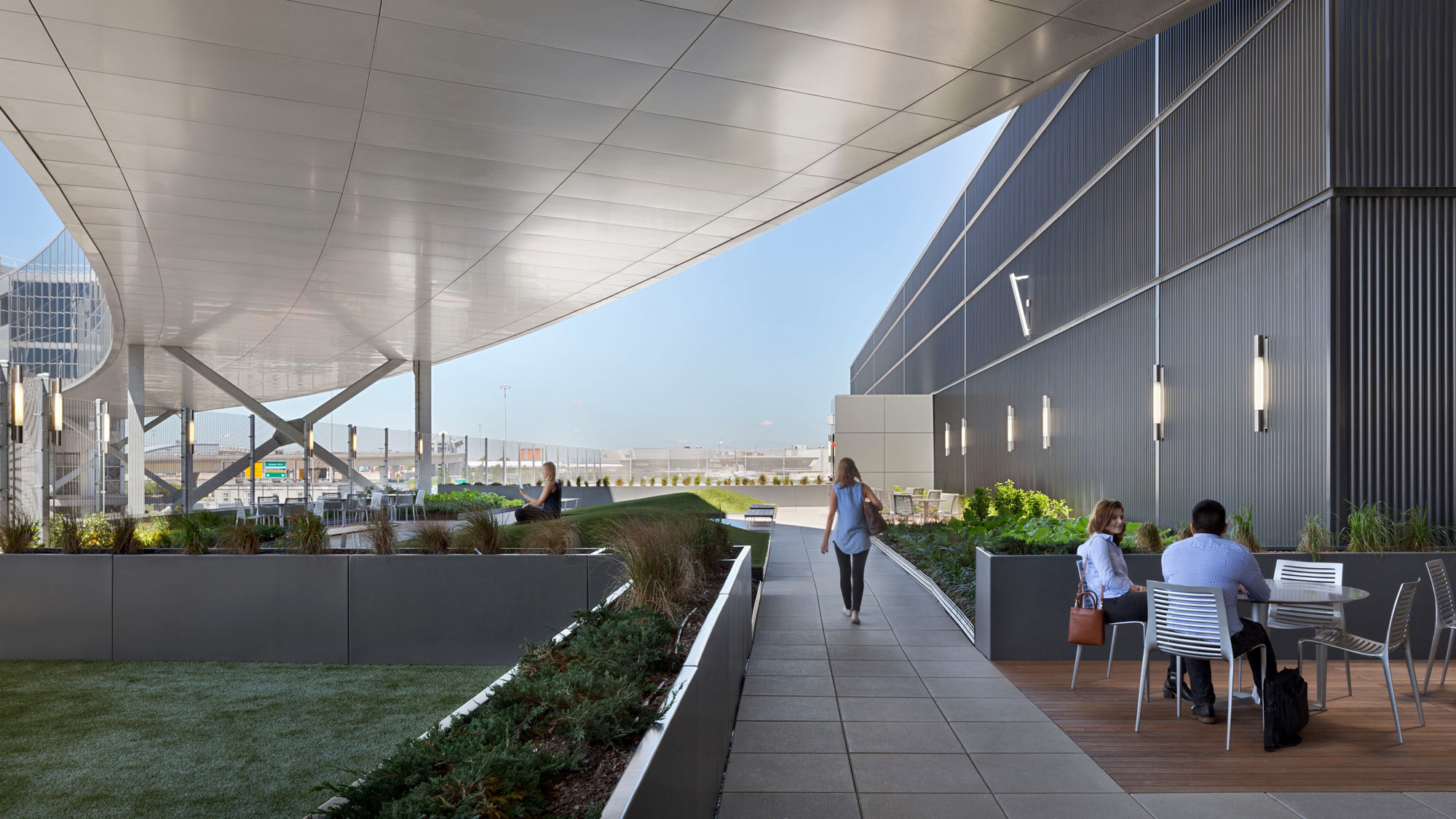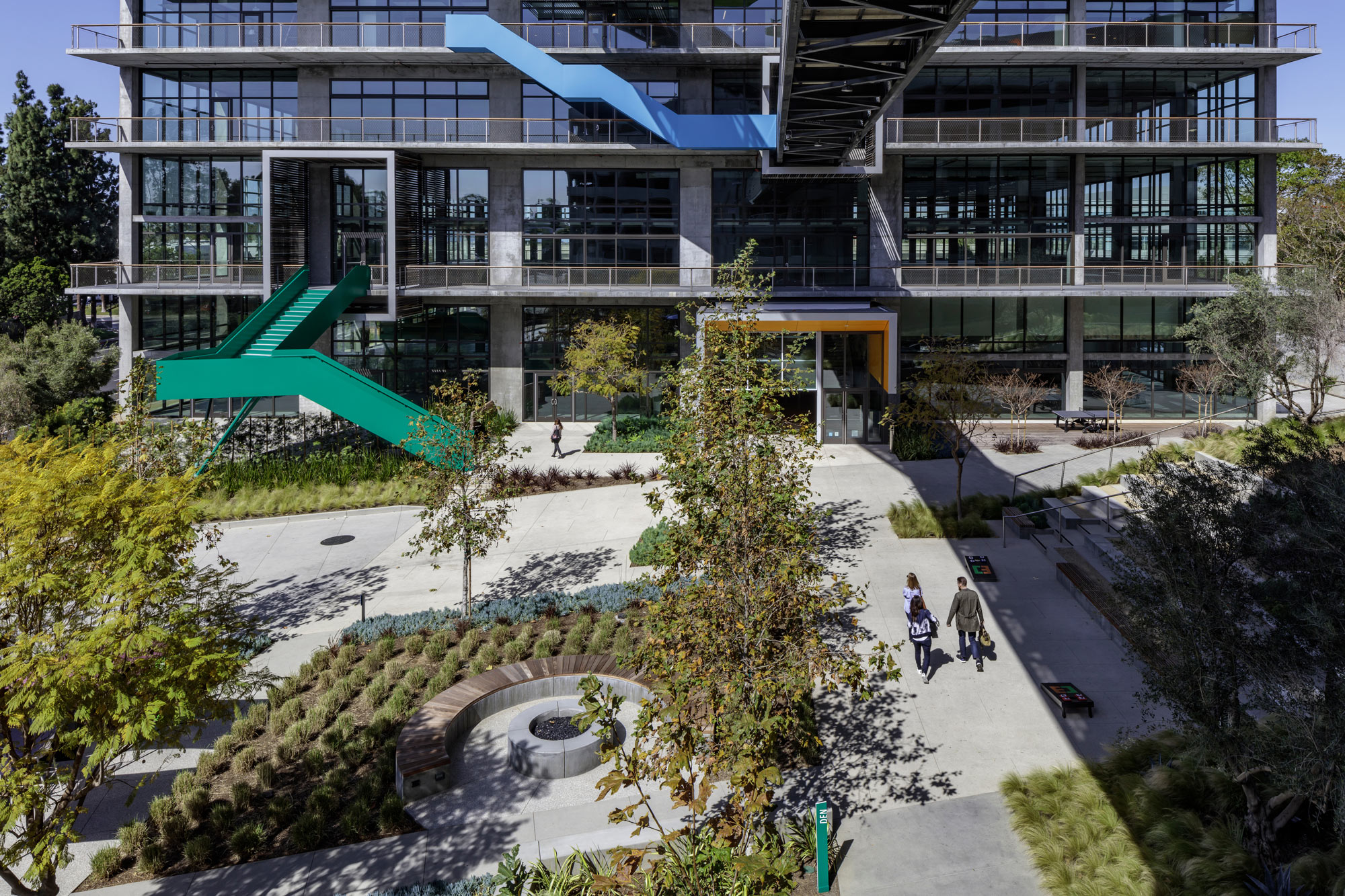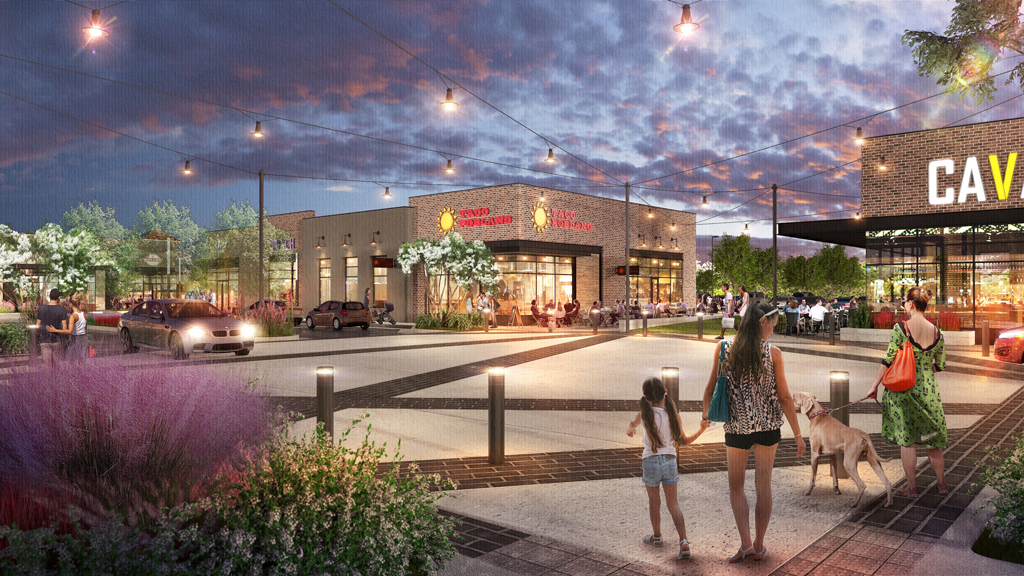Developing Open Space as the Public’s Living Room
June 30, 2020 | By Michael Wagner
Editor’s Note: This post is part of our ongoing exploration of how design is responding to the COVID-19 pandemic.
One recent Saturday, I headed to a local retail center to fetch my family’s dinner at a curbside pickup. That’s when I saw them: People sitting on an outdoor dining terrace of a restaurant, socializing and talking to each other, ordering from menus, and flagging wait staff. It was so ordinary — yet so foreign.
In that moment I was reminded how much outdoor public gathering spaces fulfill a basic human need to be around people – so much, it seems, that we will risk our health and wellbeing. Social distancing may be a sign of the times, but public space has a timeless value.
As we contemplate life outside our homes, we have a moment to not only acknowledge but enhance the spaces that define our collective urban experiences. They are the urban (and suburban) treasures that our social lives — and our economy’s biggest engines — revolve around. With the pandemic keeping us confined, public space can also be a relief valve for an anxious public.
A closer look at public spaces in retail and mixed-use environmentsIn the context of retail and mixed-use environments, public spaces have always been central to that elusive thing we call placemaking. They form the beating heart of our communities, defined by edges rich in retail, art, workplace, and entertainment — the enduring spots that consistently provide cultural value. Public places frame our public lives — a truth that has been on broad display in recent weeks as millions of people around the world have protested the death of George Floyd. Indeed, our city’s outdoor spaces are the backdrop to our civic expression.
But now more than ever, these spaces are poised to become the grand lobbies and public waiting rooms of our neighborhoods and cities. At a time when crowds will be metered and access controlled like never before, public space is where people will spend a lot of time, waiting and doing all the things people do when they’re idle — socializing, debating, checking their phones, shopping on-line, listening to music, and finding space for recreation. Just consider the value of parks in this time of pandemic.
Today, people have to queue up and wait outside groceries and shops, but the places in which they are waiting weren’t designed to fulfill this purpose. Mostly, they are roped-off sections of asphalt parking lots that are devoid of shade or anything other than a row of orange cones and makeshift sigs – not exactly the ideal shopping experience. This is where smartly designed public space can play a game-changing role in bringing us back to public life.
Imagine a retail environment where public space is imbued with the same focus on hospitality as a hotel lobby. Imagine spaces intentionally designed with shade, greenery, seating, plenty of space to socially distance, even opportunities for advertising that enrich and expand the live-work-play experience.
The recently completed Midtown East shopping center in Raleigh, North Carolina, is a great example of this kind of thinking brought to life. At the core of the retail center is a public lawn, plaza, and streetscape serving multiple functions as road, parking, and plaza. The tabletop street design, catenary lighting, and spatial relationship to adjacent tenant spaces allows for the street to easily be converted to outdoor plaza to expand the more fixed plaza centering on the public lawn.
Interestingly, retail centers can learn from the aviation industry as they start to rethink this notion of public space as a public living room. Traditionally, airports have been designed to accommodate a certain square footage of space per passenger. Everything from the terminal processor (curbside, check-in, baggage drop, security screening) to the concourse, retail offerings, baggage claim, and hold room experience at the gate are sized with very specific passenger numbers anticipated.
But COVID-19 has upended that framework and airports are suddenly challenged to find more space to accommodate fewer passengers.
Now, airports are looking for creative ways to mobilize existing spaces — walkways, parking garages, atriums, under-utilized retail or back-of-house spaces, unused rooftops converted to outdoor terraces — to spread people out where they can wait with appropriate physical distancing until they are called to their gates. Simultaneously, airport officials can’t lose sight of the passenger experience and they can’t compromise retail or food & beverage offerings. This is driving them to innovate in unprecedented ways — ways that retail centers should take a hard look at.

Concierge services, grab-and-go kiosks and touchless interfaces were already proliferating and will soon become a part of the normal airport experience — virus or no virus. Outdoor spaces, like the new roof terrace at JetBlue’s T5 at JFK Airport in New York, with natural ventilation, shade, seating, and even heat lamps for cold weather and fans for hot weather will become a normal part of the passenger journey. Airports are already looking for creative ways to merge outdoor experience with the passenger journey.
Ideas for outdoor spaces in retail centers and office buildingsThis type of creative thinking from the aviation industry about public space will define which retail spaces thrive and which will go away. Retail centers with a distributed network of public spaces - pocket parks, for example, where customers can comfortably sip their coffee, even catch up with friends, while waiting their turn — six feet apart — to browse inside their favorite store – will thrive.
Similarly, office environments with ample outdoor meeting and focus spaces that function rain or shine will take on new importance as critical leasing amenities.

The C3 project in Los Angeles, for example, converts the space between an office building and a parking garage into a richly textured tapestry of outdoor spaces, each given an identity tied to familiar themes: kitchen, game room, living room, and so forth.
The current moment may demand creative thinking, but the design solutions around public spaces are rooted in timeless ideas. Whether indoors or out they are the lifeblood of our urban spaces, and they will continue to be long after this virus is gone. Now’s the time to inject them with new life, and to recognize the ways they may have failed in the past, so those dining terraces once again can buzz with activity, even if, for now, it’s six feet apart.
For media inquiries, email .

